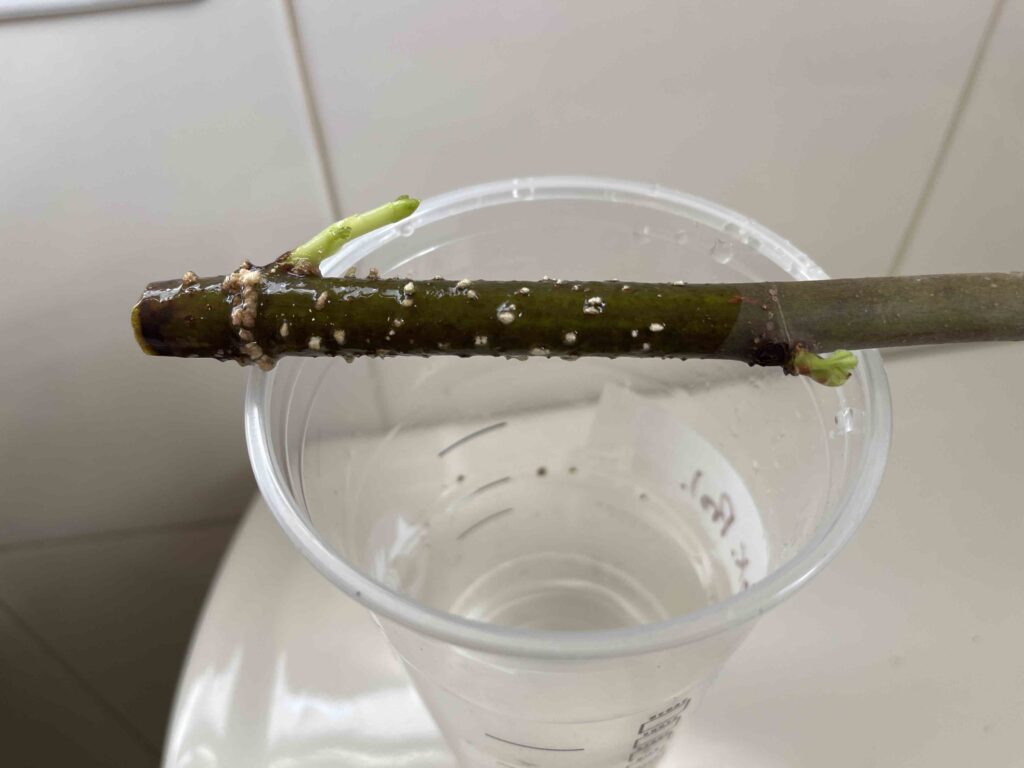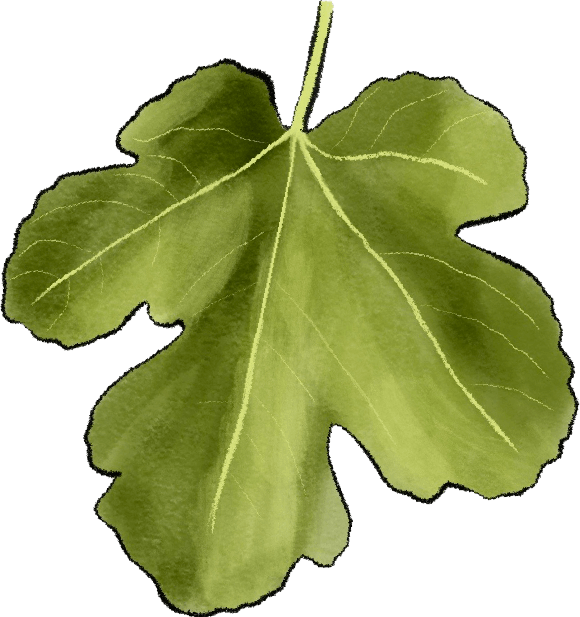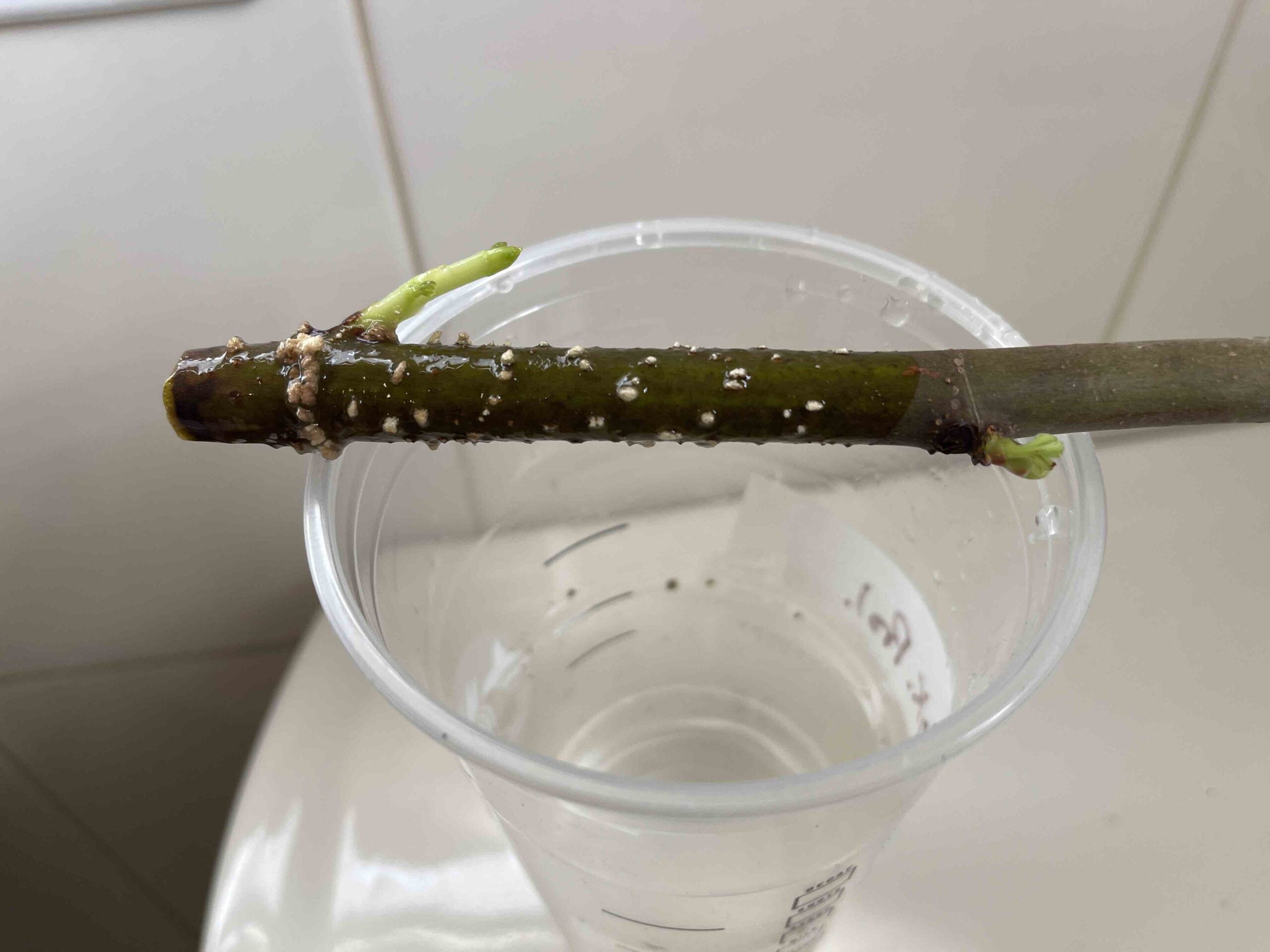
Whenever I receive a new fig cutting, my first steps are always the same: wash it thoroughly and carefully remove the lowest leaf or branch buds to ensure healthy root development. However, as you can see in the image above, I made an exception this time—I left a small bump near the base of the cutting, and sure enough, a tiny branch has emerged from that very spot.
Why Is This a Problem?
Regardless of whether you choose to root your cutting using the water method or the fig-pop method, a branch growing this low can cause complications.
Best-case scenario: The branch thrives, and you end up with the original cutting alongside a much thinner, weaker branch competing for nutrients.
Worst-case scenario: The tiny branch rots, introducing disease and jeopardizing the entire cutting—something no gardener wants to deal with.
Now, I’m faced with a decision. Do I remove the branch now, or let it continue growing?
My Plan: A Summer Experiment
Rather than immediately snipping it off, I’ve chosen to leave it for now and see how it develops. My plan is to monitor its growth and, if all goes well, split the tree into two separate plants during the summer. This way, I can experiment with propagation while ensuring the cutting remains strong and healthy.
Pro Tip: Prevent This Issue from the Start!
To avoid this dilemma in your own fig propagation journey, use a sharp mat knife and sacrifice the lowest leaf bud on your cutting before rooting. This simple step can save you from potential headaches and give your fig the best possible start.
Gardening is always a mix of science, patience, and experimentation—so stay tuned to see how this little branch turns out!
If you’d like to reach out to me privately, please use the contact form on this site.
Stay tuned, keep on rootin’ and happy growing!


Leave a Reply